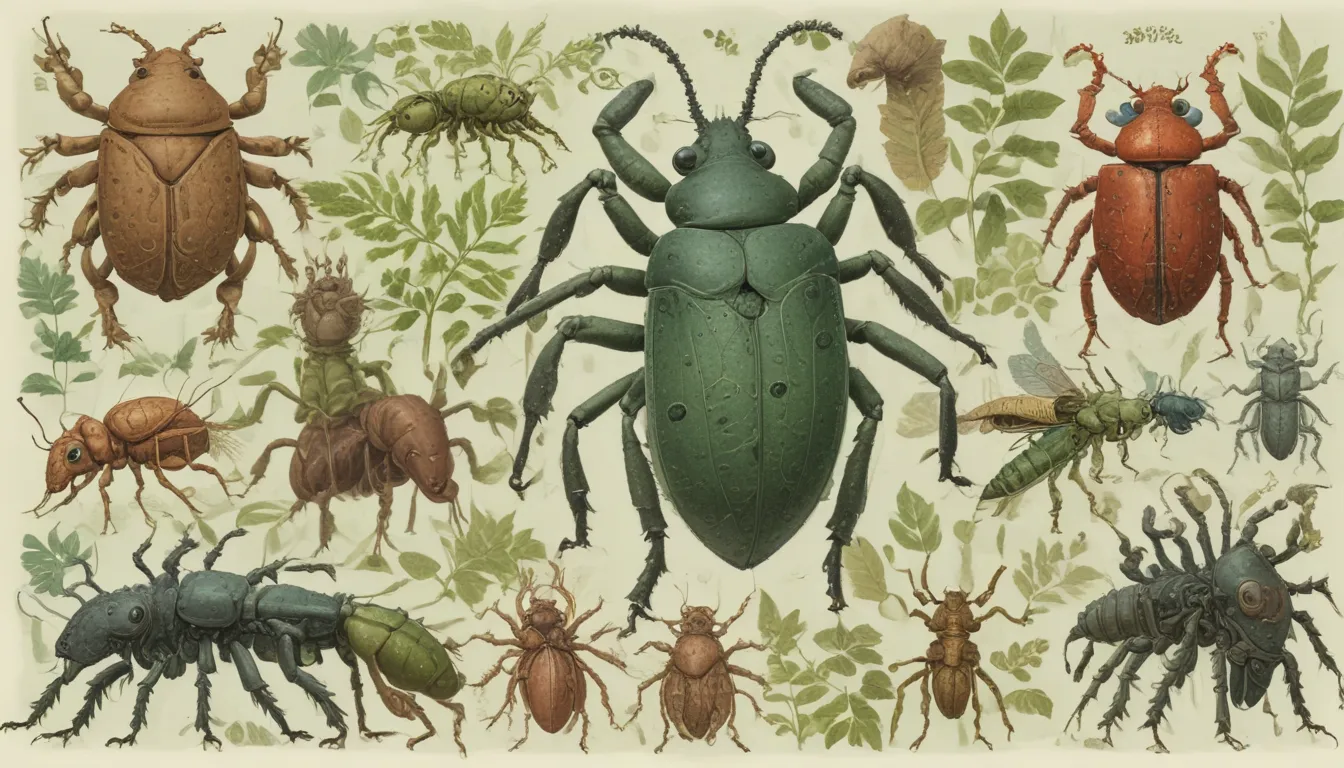Comprehensive Guide on Root Weevils: Identification and Control Methods

As we step into the garden, surrounded by vibrant hydrangeas reaching heights taller than ourselves, we may encounter mysterious signs of damage on the leaves. A dead beetle lies at our feet, seemingly harmless. But don’t be fooled – it may be playing dead.
Root weevils, also known as snout beetles, belong to the Curculionidae family in the beetle order Coleoptera. These pests can wreak havoc on a wide variety of plants, causing both minor cosmetic issues and severe damage. From evergreens to deciduous plants, root weevils are a common problem for gardeners.
In this comprehensive guide, we’ll delve into the world of root weevils, exploring how to identify these insects and outlining effective control methods to protect your garden. Let’s dive in and learn more about these pesky pests:
Understanding Root Weevils
Root weevils are notorious for their long snouts and unique feeding habits. Both adults and larvae can damage plants, with adults leaving ragged D-shaped notches on leaf edges, and larvae feeding on roots, causing significant harm to the plant’s health.
Identifying these insects is crucial for effective pest management. Adult root weevils are brown or black with distinct snouts and elbowed antennae. Meanwhile, eggs are small, round, and white, later turning brown, while larvae are C-shaped, legless grubs that range in size from a quarter to a half-inch.
Common species such as the black vine weevil, strawberry root weevil, and lilac root weevil pose a threat to various plants in your garden. Recognizing their physical characteristics is the first step in combating these pests.
Unveiling the Life Cycle of Root Weevils
Understanding the life cycle of root weevils is essential for implementing effective control strategies. Most weevils reproduce asexually, with females laying hundreds of eggs in soil cracks during midsummer and fall. The larvae overwinter in the soil, feeding and growing throughout spring.
In mid to late spring, adults emerge from pupae and begin feeding before laying eggs, perpetuating the cycle. Monitoring these life stages is crucial for timely intervention to prevent extensive damage to your plants.
How to Identify Root Weevils
Recognizing the signs of root weevil infestations early on can save your plants from devastation. Look out for fresh leaf notches, monitor plants throughout the season, and inspect roots for eggs or larvae. Being vigilant in your observations will help you detect these pests before they cause irreparable harm.
Effective Control Methods
Combatting root weevils requires an integrated pest management approach, combining monitoring with cultural, biological, and organic control methods. Here are some strategies to safeguard your plants against these voracious pests:
Cultural and Physical Control
- Start with healthy plants and opt for resistant cultivars to minimize susceptibility.
- Inspect incoming plants for signs of infestation and remove crop debris regularly.
- Handpick adults or use pitfall traps with water and soap to capture beetles.
- Utilize sticky materials on tree trunks and stems to trap crawling adults.
- Cultivate the soil to expose grubs to predators and beneficial organisms.
Biological Control
- Encourage ground foraging birds by adding shredded oak leaves around plants.
- Introduce nematodes into the soil to target larvae and pupae effectively.
- Use nematodes such as Heterohabditis bacteriophora for stationary pests.
- Apply nematodes during the appropriate soil temperature ranges for optimal results.
Organic Pesticides
- Consider biopesticides like Beauveria bassiana for adult control.
- Incorporate insect growth regulators like Azadirachtin to repel and regulate pest populations.
Chemical Pesticides
- Reserve chemical pesticides as a last resort due to non-selective effects on beneficial insects.
- Time pesticide applications during vulnerable life stages of weevils for maximum efficacy.
Root weevils may pose a threat to your garden, but with a proactive approach, you can effectively manage these pests and protect your plants from harm. Implementing a combination of control methods tailored to your garden’s needs will ensure a healthy and thriving growing environment.
Have you encountered snout beetles in your garden, leaving telltale signs of damage on your plants? Share your experiences and insights in the comments below. Stay informed and empowered to tackle common garden pests and enhance your gardening skills.
For more tips on pest management and plant care, explore our related guides:
- Doing Battle with Japanese Beetles: Tips for Banning Them From Your Garden
- How to Identify and Control Mealybugs
- How to Identify and Control Earwigs in the Garden
Equip yourself with knowledge and practical solutions to nurture a vibrant and pest-free garden, where your plants can flourish and thrive. Take charge of your gardening journey and cultivate a green oasis brimming with beauty and vitality.
*





